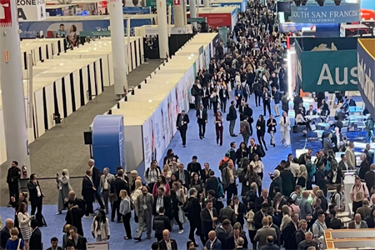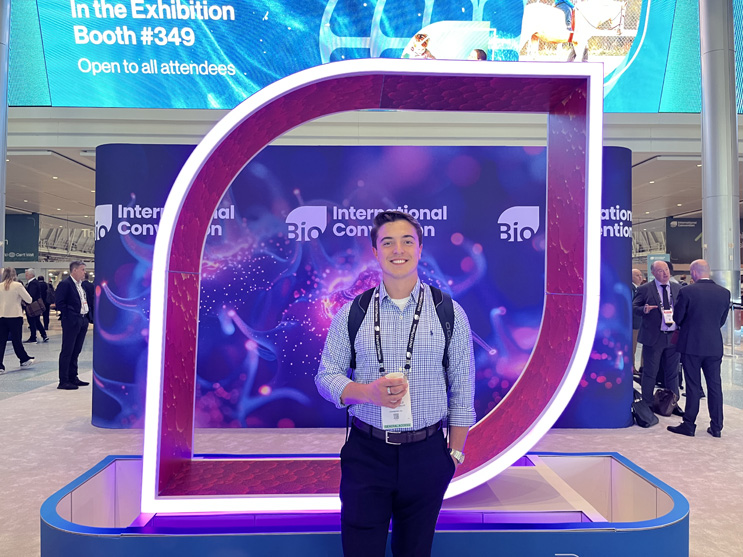BIO2025 Recap: FDA Reducing Animal Testing, Governor Shapiro On Supporting Biopharma, Practical AI Use

By Tyler Menichiello, Chief Editor, Bioprocess Online

June 16 marked the beginning of this year’s BIO International Convention in Boston — a multiday gathering of the brightest minds and stakeholders from across the biotech world. Founders, CEOs, CSOs, tech bros, bench scientists, venture capitalists, clinicians, academics, patient advocates — you name it, and they were probably in attendance, along with the roughly 20,000 rest of us. As my colleague and chief editor of Life Science Leader Ben Comer writes, it’s unlikely that any two people had the same BIO experience.
On top of this being my first BIO, I had the opportunity to moderate my first live, in-person panel discussion on the keys to building successful CDMO partnerships. I will be sharing more about that panel and other sessions of interest in the coming weeks, but in the meantime, here are some of my highlights from the week.
FDA To Reduce Animal Testing Toxicity Studies, More From Makary, MD, M.P.H.
Though I couldn’t be there myself, a colleague gave me the run-down of FDA Commissioner Martin Makary, M.D., M.P.H.’s fireside chat with John Crowley, CEO of BIO. Of particular note was his comment on the new FDA’s mission to reduce the need for — and ultimately time spent on — animal toxicity studies.
“There are wasted steps in the [drug] evaluation process,” Makary said. The plan is to shift from relying on animal tests to using AI-powered toxicity predictions through tools like organoids and organ-on-a-chip.
Makary also wants to crack down on manufacturing inspections and perform them without advanced notice.
“A scheduled inspection is not an inspection,” he said.
The FDA commissioner also apparently expressed a desire to improve communication between FDA and sponsors. This will take open-mindedness and humility on the agency’s part, he said. Through “gold-standard science and common sense,” the agency hopes to custom-tailor the regulatory progress for specific diseases to ultimately get drugs approved for patients.

BIO welcome reception at the Boston Museum of Fine Arts
Governor Josh Shapiro: Political Champion Of Biopharma
It wasn’t just the Pennsylvanian in me — Governor Shapiro knows how to work a room. On stage, during another fireside chat with Crowley, Shapiro outlined his plans to build and foster Pennsylvania’s life sciences economy following one motto, written on the wall in the governor’s office: “GSD.”
In Boston, Shapiro said, this translates to “Get stuff done.”
“If you’re in Philly, I’d say we get shit done!”
In that spirit, Shapiro outlined his office’s approach encourage growth in the sector within the borders of Pennsylvania. He spoke on the importance of keeping the “big brains” in-state after they graduate from places like the University of Pittsburgh, Penn State University, and University of Pennsylvania — the commonwealth’s de facto “research triangle.” Growing the state’s bioeconomy depends on both the retention of these graduating scientists and entrepreneurs, as well as enticing Big Pharma to set up shop in Pennsylvania.
At the heart of this initiative is Shapiro’s proposed $50 million investment to support life science innovation across the state. His administration has also markedly reduced the time it takes to acquire a business license in the commonwealth from eight weeks to approximately 24 hours, making it easier for startups to germinate.
Have You Heard About This New Thing Called AI?
It’s hard to say where we are in the Gartner Hype Cycle of AI, but if I were to hazard a guess, we’re just now rounding the Peak of Inflated Expectations. The hype is cooling down, and I think a lot of people are starting to realize that AI isn’t magic. Rather, it’s an extraordinarily powerful tool that’s only as good as the data it’s trained on.
“Data allows you to do AI. You don’t have proper data, no AI — just BS,” said Lee Cronin, Ph.D., CEO and CSO at Chemify, who delivered this cheeky comment at a session titled “Integrating AI-Driven Drug Discovery to Improve R&D Supply Chain Efficiency.” This panel discussion was moderated by Uduak Thomas, senior editor at Genetic Engineering & Biotechnology News. Cronin and Thomas were joined on stage by Woody Sherman, Ph.D., founder and chief innovation officer at Psivant Therapeutics; Raphael Townshend, Ph.D., founder & CEO at Atomic AI; and Rüdiger Weseloh, Ph.D., executive director of business development at EMD Serono.
Two important points from this panel:
- Companies cannot underestimate the importance of investing in data collection to build AI-ready data sets. Sherman points to AlphaFold as a prime example, which was made possible by the roughly $30 billion of public investment in structural biology research over decades that went into building the Protein Data Bank.
- There is far more value in narrower, targeted AI applications than those that try to solve every problem at once. At this stage, highly specialized — and thus, actually helpful — AI tools will outcompete companies who paint in broad strokes and promise the world.

Bioprocess Online's Chief Editor, Tyler Menichiello
The other session I attended was titled “AI in Biologics Drug Discovery: Analyzing the Competitive Landscape, Technical Approaches, and the Industry's Role,” moderated by Darren Platt, Ph.D., chief data officer at Montage Bio. The panel featured Georgia Lu, managing partner at Magnet Ventures; Alex Lugovskoy, Ph.D., CEO and co-founder at Diagonal Therapeutics; Ashoka Madduri, Ph.D., head of scientific strategy and competitive intelligence at Sanofi’s mRNA Center of Excellence; Vega Shah, Ph.D., product marketing manager lead, healthcare & life sciences at NVIDIA; and Yue Webster, Ph.D., VP of model-driven drug discovery at Eli Lilly.
This session offered some practical guidance on approaching AI adoption, as well as offered some predictions on AI’s future potential in drug discovery. There seemed to be agreement that next-generation AI will move beyond static protein structures to predict dynamic, active protein structures. This shift will offer functional insight to enable the discovery of purpose-built molecules.
As for integrating AI into workflows, the panelists all agree — operational efficiency is the goal. The best way to achieve this, Webster said, is to implement AI wherever scientists are struggling (or complaining) the most and at points in the workflow with the highest data velocity.
Of course, the topic of AI was not restricted to these two sessions. It was touched on or alluded to across nearly every session I attended, and the overarching message was consistent: AI can make people more efficient, but it can’t replace them. Specialized AI models, good data, and thoughtful implementation are critical for any company hoping to get the most out of this technology.
On the bright side, everyone is figuring this out in real time. Conferences like BIO are great opportunities to share these lessons and thoughts on where the industry is heading. One thing’s for sure — there will be plenty more headlines about AI to come.
